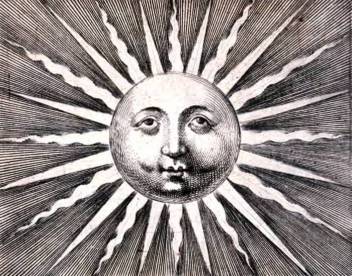The Spring Green Light
By Steve Roark
For all you warm weather people out there, your time has come. The vernal (spring) equinox is upon us, which is the official beginning of Spring, arriving this year on March 20. The event is not only a promise of warmer weather, it also plays a key role in determining what date Easter occurs, which can move around quite a bit year to year.

First let’s do the science stuff. As you know, days are longer in summer and shorter in winter because the Earth pivots on its axis as it orbits, leaning our hemisphere (the northern one) either towards the sun (summer) or away from the sun (winter). That change in the angle at which sun rays strikes the Earth determines how well it heats it up. Leaning towards the sun makes it appear higher in the sky, and the rays are more direct and warm more. Leaning away from the sun in winter makes it appear lower in the southern sky, and the warming rays strike the Earth at an angle and so don’t heat as efficiently. Twice a year though the Earth reaches a mid-way point in it pivot where the hours of daylight and darkness are the same, and these are called the equinox, which in Latin means “equality of night and day”. As you know the other equinox is in September and is called the autumnal equinox.
The end of winter was a big deal long ago when growing local food was critical to survival, and so the beginning of the growing season was celebrated all over the world. The spring equinox was a symbol of renewal and rebirth, and in Italy it was celebrated by planting garden and flower seeds, which is still a custom around Sicily. The Hindu consider the equinox as a victory of good over evil, and they celebrate it with the “festival of colors”, where participants toss bright colored powders over each other while dancing about. In Japan the spring equinox is called Shunbun no hi and is a more somber celebration, where families get together and visit ancestral graves. Lighting bonfires was a common way to celebrate the equinox in many parts of the world.
Recognizing the spring equinox goes way back. The famous rocks at Stonehenge in England are over 4000 years old and were constructed so that the sun would rise precisely between two stones on the equinox. An ancient pyramid in Mexico was designed so that on the equinox the sun would light up one edge of the pyramid that looked like a serpent, which represented the Mayan god Kukulcan.
The date to celebrate Easter is determined by the equinox. The Bible describes Jesus Christ’s death and resurrection as occurring around the time of the Jewish Passover, which was celebrated on the first full moon following the spring equinox. But there were some differing interpretations of when to celebrate Easter, with some churches celebrating it on the day of the Passover, while others celebrated it on the following Sunday. So, to clear up the confusion, Emperor Constantine I formed a council in 325 AD, who determined that Easter would be celebrated on the first Sunday after the first full moon occurring on or after the spring equinox.

